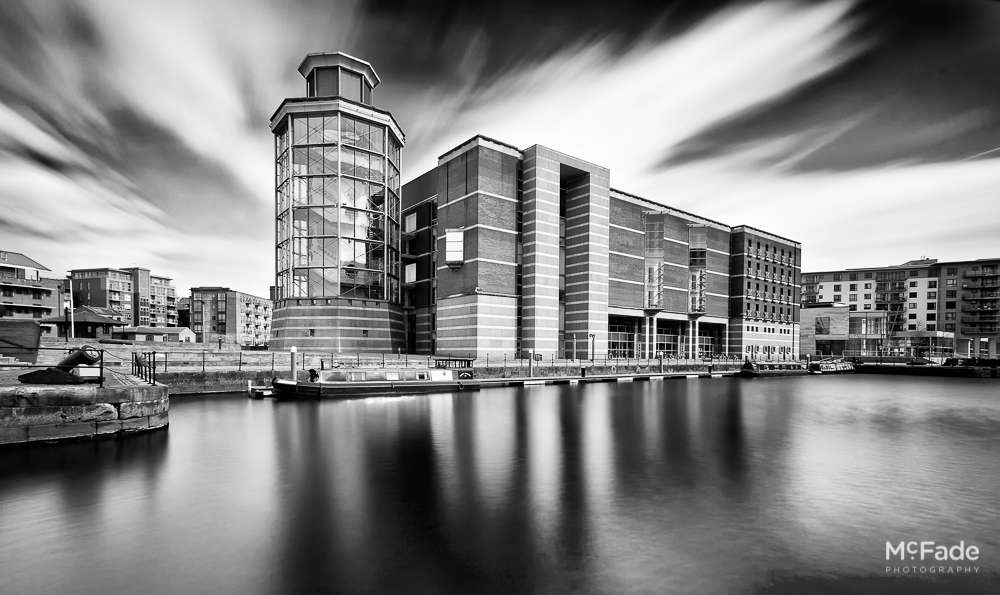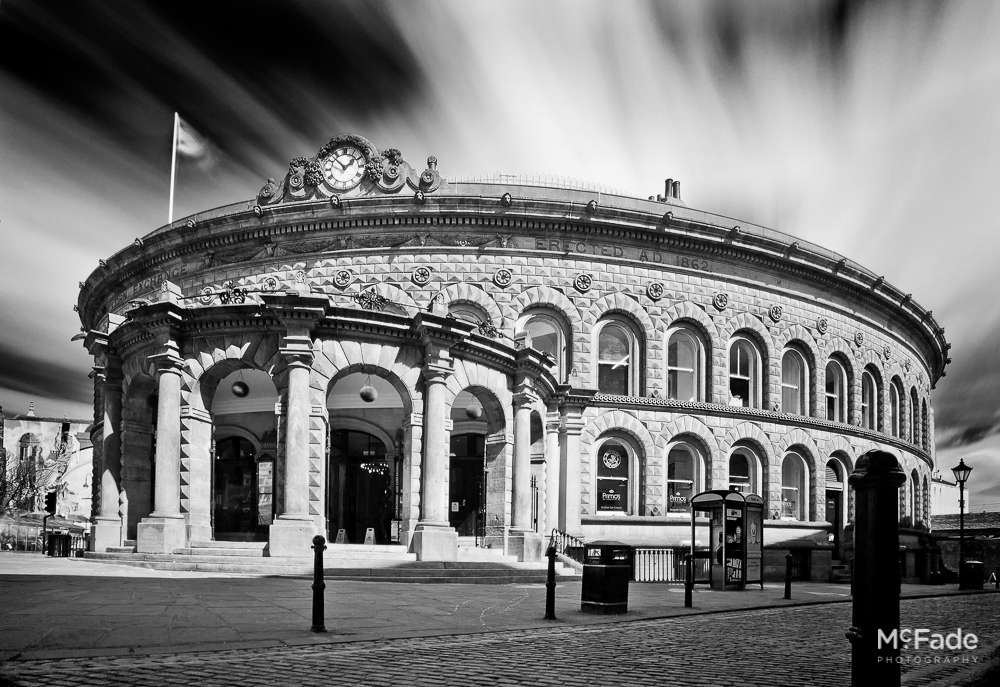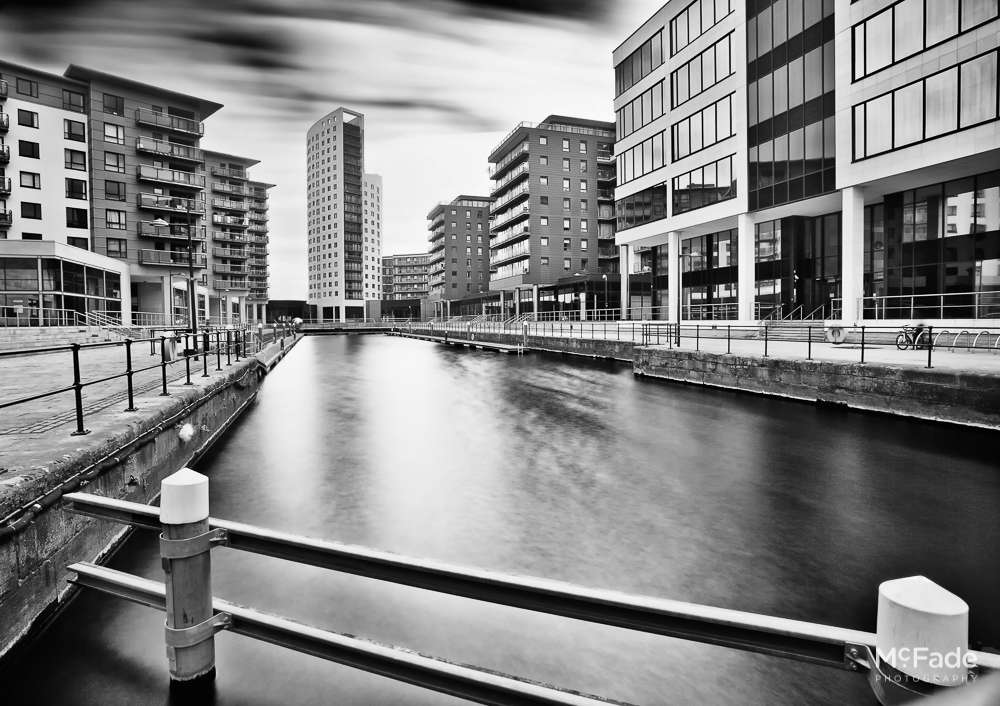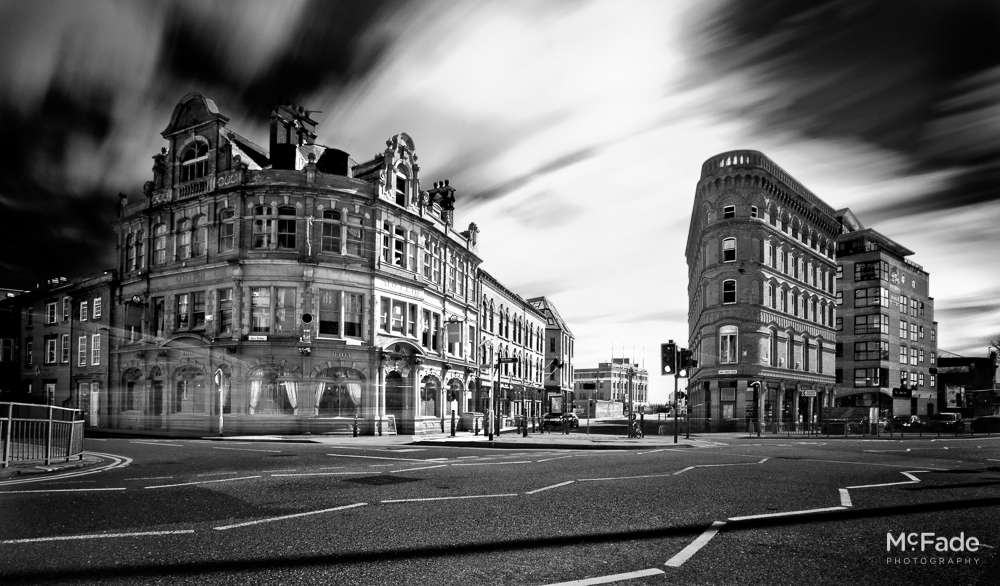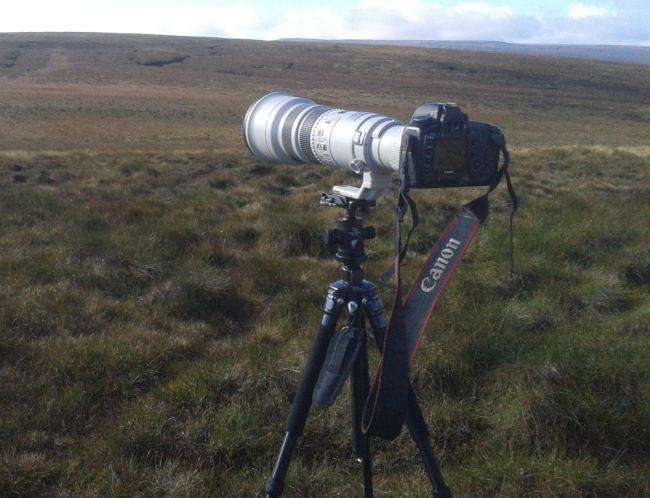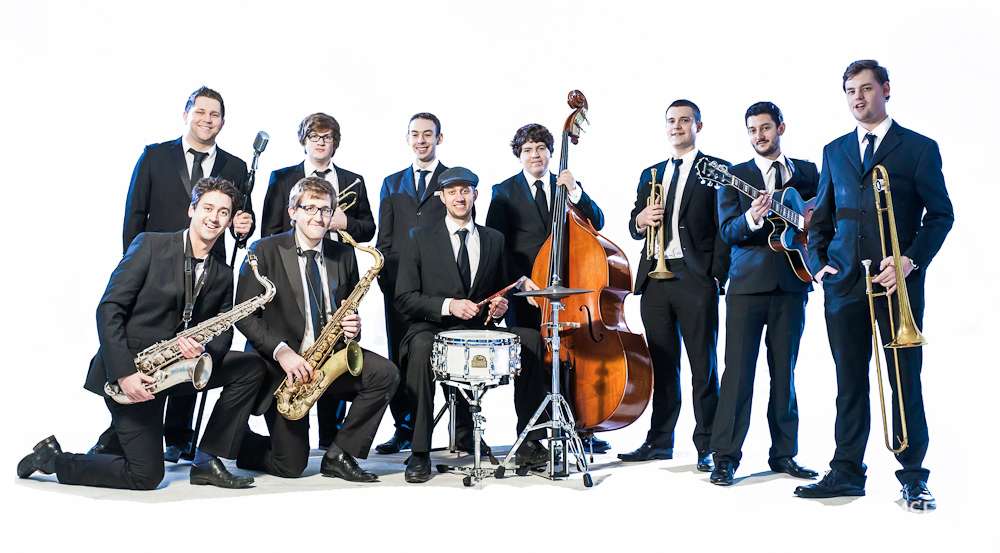Get Surreal with a 10 STOP ND Filter!
Can you use a 10 stop filter do to long exposures in cities? They are commonplace in landscape photography, where the shots are usually taken in low light at sunrise or sunset.
You normally get shots with lots of colours, milky water and foam-like seascapes.
So I thought I’d try this 10 stop filter technique in Leeds – just after midday on a bright, sunny day… with clouds blowing past.
Here are some tips on how to do it…
First step – Get a 10 stop filter
It’s sunny, to get a long exposure you need to stop the light flooding in so fast. There are lots of “ND” filters around these days, right up to the 10-Stop ND – sometimes called 1000x, ND3.0 or the Big Stoppa. They’re not the cheapest things out there, but are essential.
Use a polariser with your 10 stop filter
Second to the ND really, polarisers help you darken the blue areas of the sky and control reflections on water, and also take away 2 extra stops of light. The main cost is that you may see the corners vignette slightly and if you have cheaper filters, they may affect the clarity of the shot.
Cable Release and Bulb Exposure Mode
Most cameras have a maximum of 30 seconds exposure time; to extend this you’ll need to use the “BULB” setting, and use a cable release. This allows you to go as long as you like – the shots from today were all 59 seconds.
If you have more modern cameras like the Canon 90d or the 5D Mark IV then they do have an internal intervalometer and bulb setting which can be set to as long as you like. This can usually be found in the red menu on a Canon system.
Use “Live View”
You just can’t see through the camera when you 10-stop ND is on there – so I was fully expecting to have to take the thing off to compose and focus every shot. But I tried putting on Live View and was amazed to see that I could see everything brightly enough to compose AND use autofocus! So if you’ve got it, give it a try.
Shoot the “bright” side of buildings
And finally, I found that shooting the brighter edges of buildings was far more effective than the darker sides – a bright building to contrasts against the sky. It’s up to you of course, but if you shoot at 90 degrees to the sun, you’ll get maximum polarisation (so a dark sky) and hopefully a nicely lit building.
We hope you found this useful

